Workplace well-being by design: How firms prioritise employee wellness through culture, policy and office design
Remember those days when your calendar would have office lunches and yoga sessions with friends pencilled in between client meetings and brainstorming sessions? Today with most of us working from home, your calendar might still have those meetings and work calls, but it’s getting tougher to squeeze in a watercooler conversation, a fitness session or even just a breather in between. Wellbeing is taking a backseat to work.
We’re all spending more time on our laptops, answering messages and taking calls, often late into the night, leading to trouble maintaining boundaries and work-life balance. For many younger members of the workforce, social isolation has been an added concern, with fewer opportunities to form bonds at the workplace. Add to that the strain of working from unergonomic spaces and through acoustic distractions, and many of us end up stressed, with trouble sleeping, poor self-care and nutrition, and other health issues.
It’s no wonder then that organisational psychologists and wellness experts are now discussing the state of languishing, which The New York Times is calling the dominant emotion of 2021. Burnout and health issues among employees are reaching an all-time high too, and organisations have to take deliberate steps to protect their people and help them thrive by designing workplace well-being into their culture, processes and physical spaces.
The big step: Setting boundaries
Working from home made boundaries so much more difficult to maintain, affecting people’s ability to manage their tasks during work hours. Our most recent The Way We Work Survey 2021 reflected this with 67% of the respondents highlighting that they found maintaining work-life balance the most difficult part of working from home. Many of these respondents were eager to come back to the office so that they can keep work and home separate, but does the post-pandemic workplace address this?
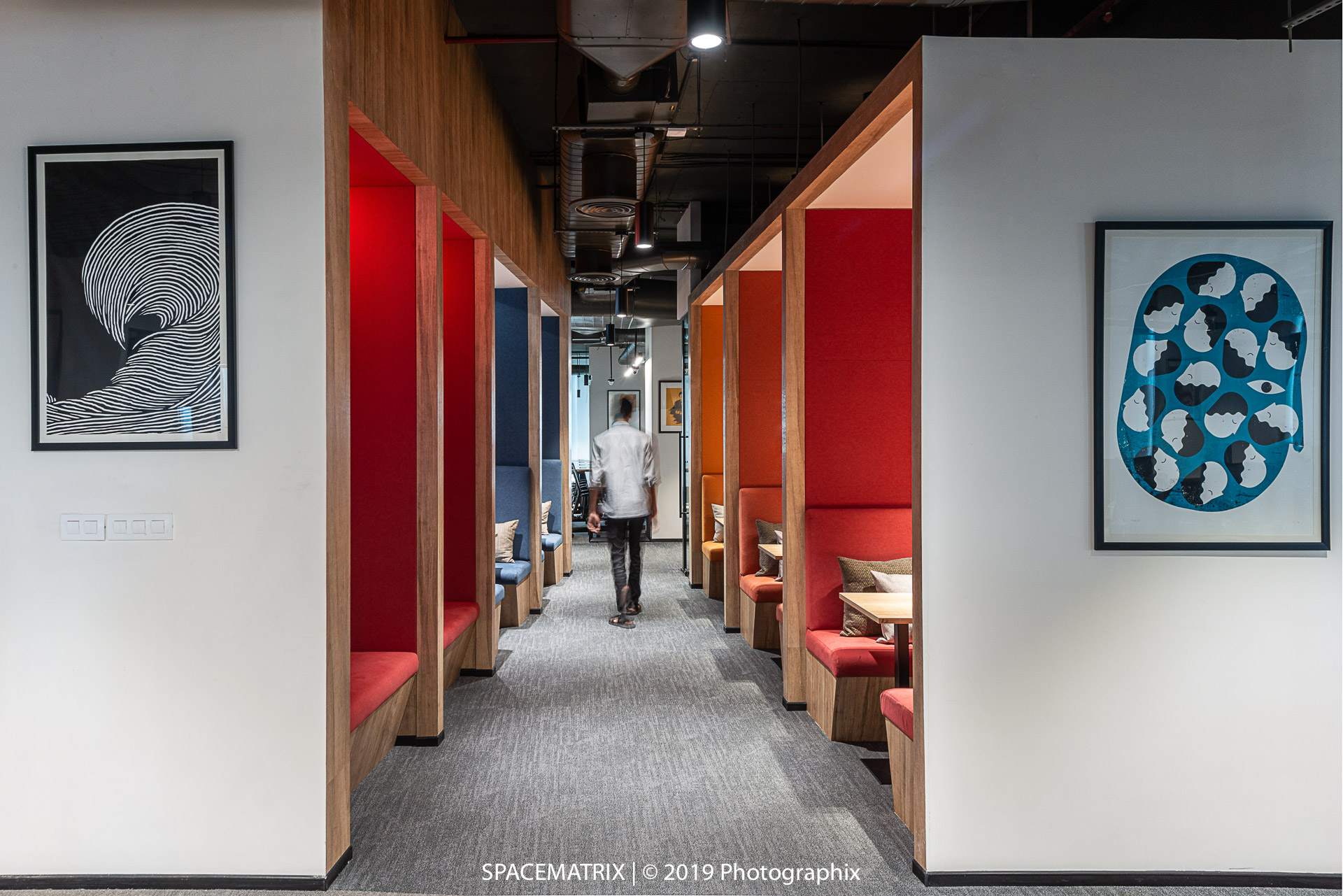
Browserstack, Mumbai
One way to do this is by promoting clear demarcated spaces even within an open plan layout. This is possible when firms adopt an activity based work model, with separate zones for private focused work, one-on-one calls, brainstorming sessions, board meetings, and town halls. We set up our client Browserstack’s Mumbai office to ensure the team had different kinds of spaces for different activities. Right from single-person phone booths to mini amphitheatres, the office enables focused work as well as collaborative work and community activities.
Of course clear and convenient access to the right technology for the task at hand, be it high-powered computing or scrum call with remote participants, is key to success in the post-pandemic remote workplace. The Space Matrix Lab, our workplace incubator space in Gurgaon is calibrated for this. Its technology-enabled meeting rooms with sophisticated AV systems ensure everyone is able to participate during a call without being muffled or off-screen. Another interesting space at the Lab is the Black Maria, a sound-proof focus room where distractions are few but opportunities to get into a creative flow are many.
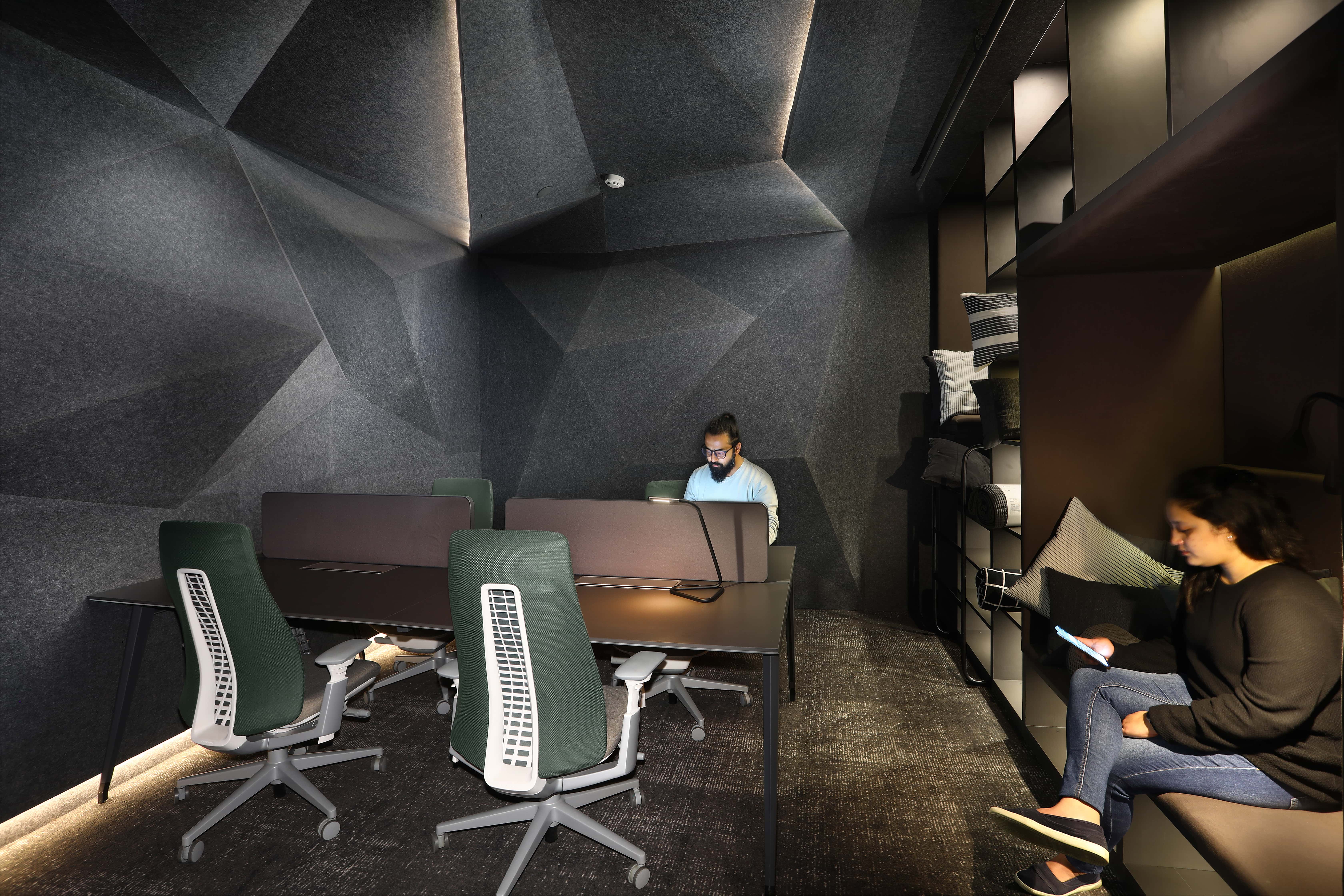
Space Matrix Lab, Gurgaon
Promoting a culture of wellbeing
Just as firms were starting to work from home last year on account of the lockdowns, IBM CEO Aravind Krishna pledged to support his employees by reducing meeting durations, supporting “not camera ready” times and making mental and physical health a priority. And it was a very important move at a time when many people were anxious, stressed or on the brink of burnout. Now, many organisations are adopting similar policies to promote mental health.
For one, they are enforcing a no-meetings policy at certain hours of the day to ensure people get time to focus on their individual work or family time. Firms are also encouraging their employees to overcome the culture of leave-shaming and take their vacation days to relax and rejuvenate without guilt.
This cultural shift towards wellbeing also translates into workspace design. For instance, firms we work with are adding simple nudges that promote health conscious behaviour — for instance, healthy snacks displayed prominently in the pantry, gyms, meditation rooms to encourage a more active lifestyle, activities or bicycle racks and shower rooms to facilitate a more active lifestyle. Over here at Space Matrix, we started the WELLocity Wave programme to encourage wellness practices such as fitness, yoga and meditation among our team.
Creating a welcoming, positive environment
Well-being at the workplace comes not only from the workplace policies and nudge tactics but also from design details that enable warmth, positivity and comfort. One design element that the pandemic has brought to the centrestage is biophilia, both for its natural air-purifying abilities as well as for the soothing greenery it brings indoors. Natural elements like these are prominent at the Prudential WorkPLAYce, Singapore, one of our award-winning projects.
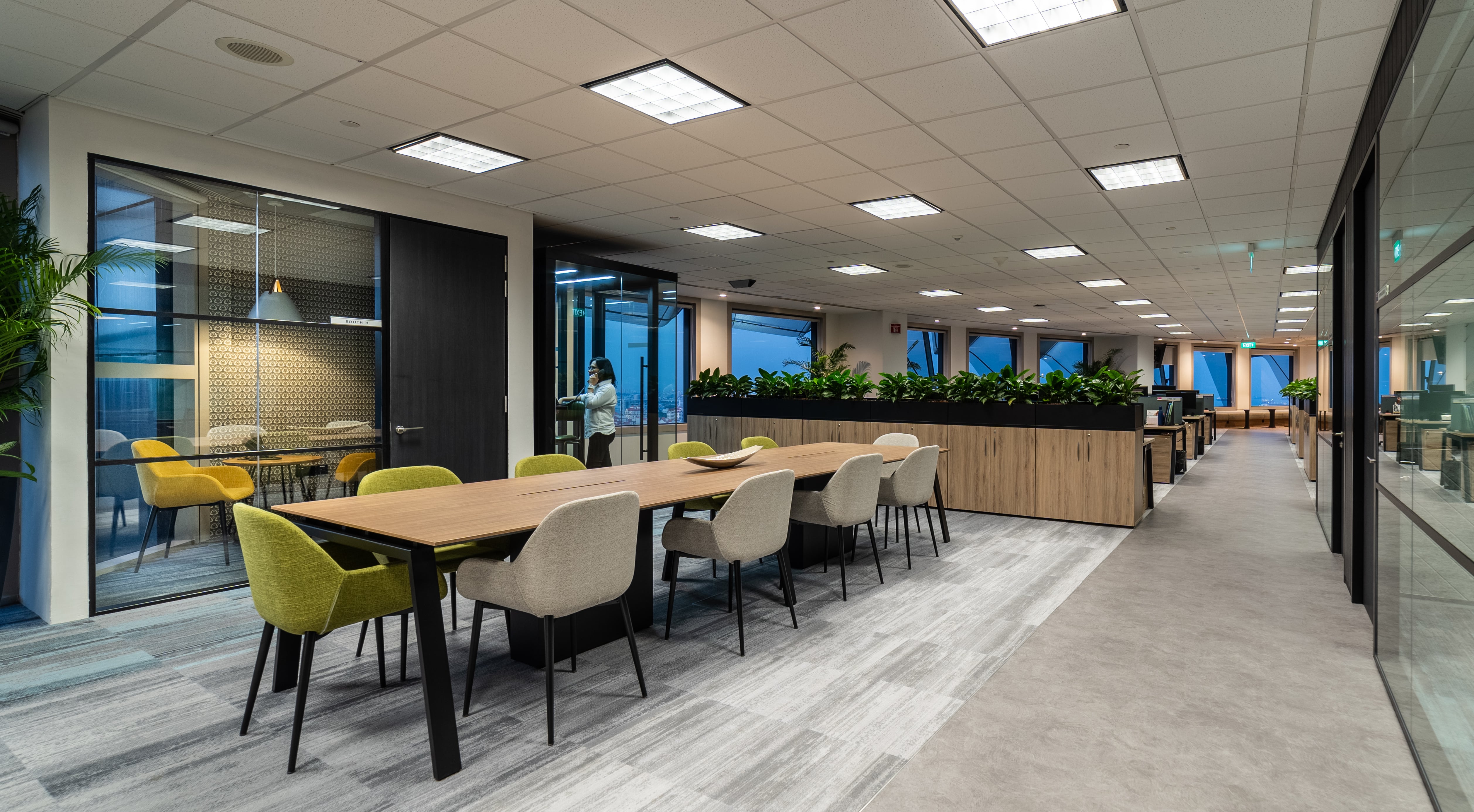
Hilton, Singapore
A hospitality-centric workplace is also vital to coax employees back to the workplace and offer them home-like comfort and conveniences. Hilton Singapore’s hospitality-oriented workplace design is a case in point — the multiplicity of textures and warm colours and cozy, comfortable seating bring a welcoming vibe to the space. Airbnb Gurgaon’s workplace design also gives their employees the sense of comfort while staying true to its brand. And by introducing comfortable massage chairs, air purifying plants, sunlit workspaces and nutritious food, Rubrik’s WELL and LEED certified Bangalore office combines both sustainability and comfort to bring workplace wellbeing and employee-centricity to this office.
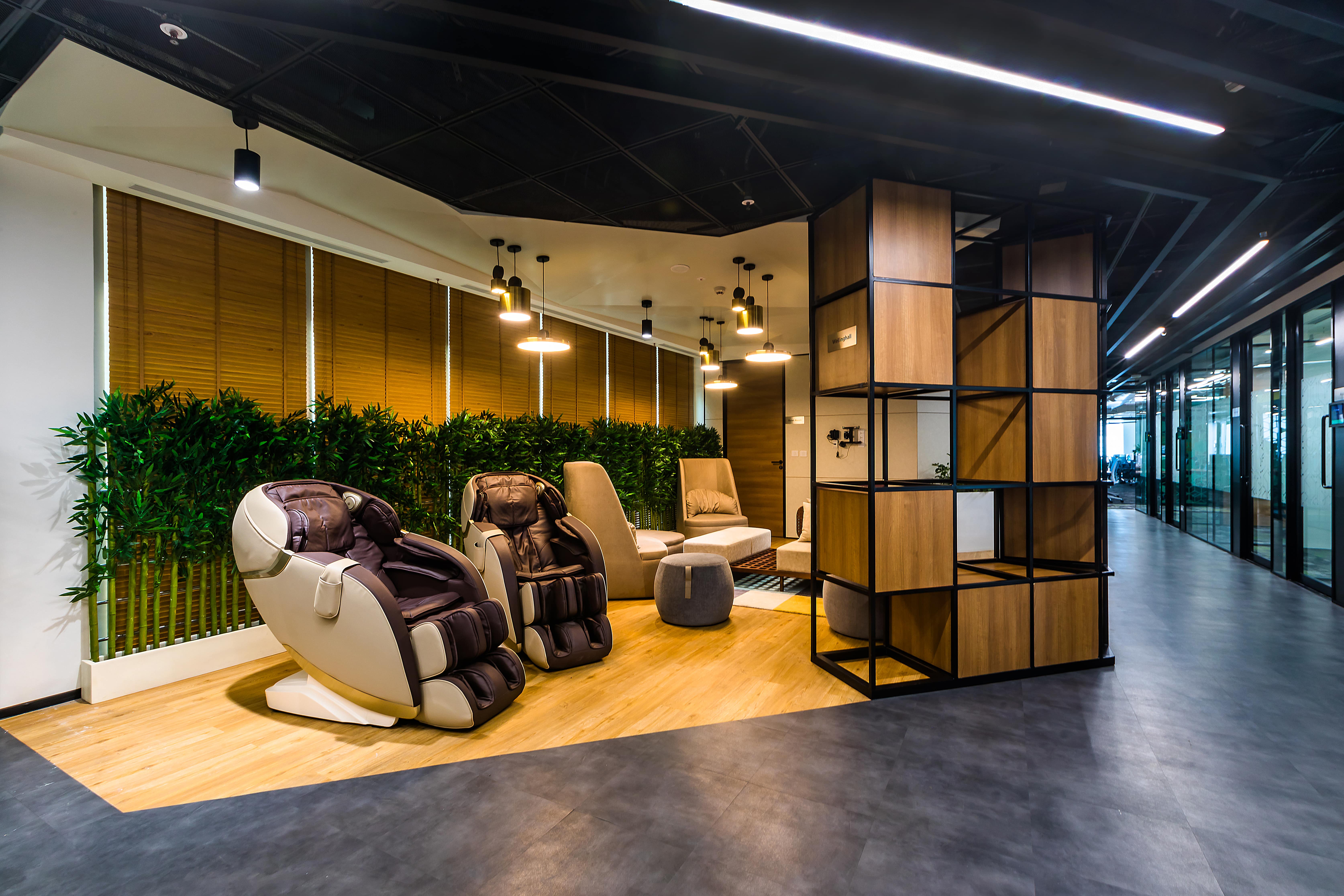
Rubrik, Bangalore
Enabling human moments at work
We have still been acing presentations and organising brainstorming sessions as we worked from home throughout the pandemic, but it cost us the little moments of social connection and interaction we would have thrived on if we were at the physical workplace. That would have been crucial to improving morale and extending emotional support when you were low on morale or motivation. That’s why revamped post-pandemic workspaces are focusing more on soft spaces -- areas where people can socialise freely and unwind, huddle to ideate and connect, and enjoy happy hours or movie nights.
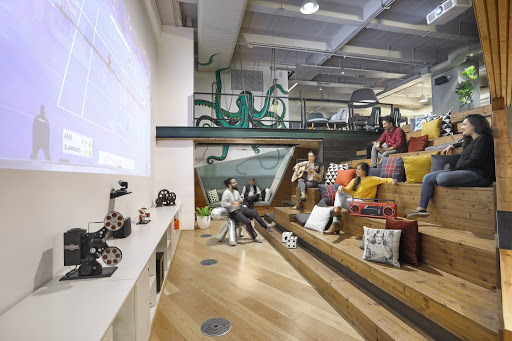
Space Matrix Lab, Gurgaon
Space Matrix Lab’s Cascading Mindvalley, for instance, is a step seating area that acts as a zone for our team to connect over tennis matches, old classic movies and more. The William Grant & Sons office in Singapore hosts happy hours all day at its open bar for employees and guests, bringing opportunities to converse and connect to the workplace.
Human-centric workplaces that put employees at the forefront are the biggest cushion we have to address wellbeing and burnout. And aside from the policies and workplace strategies, the management plays a big role here by being honest about human frailty in the workplace. CEOs and senior management can be upfront about mental health concerns and the workplace initiatives being introduced to address them. HR teams can encourage the workforce to open up about problems through counselling services and safe channels of communication at work. They can also help employees address social isolation and feel a greater sense of belonging through volunteering activities or other forms of community bonding exercises.
Wondering how you can address wellbeing at your workplace? We’ll help you develop an employee-centric workplace strategy that is right for your business.










